“Continue straight on this road for 16 miles”, my car gleefully instructs.
Although, what it doesn’t seem to recognise is the dirt track I’m heading along, far out into the Wyoming wilderness, with no end in sight – and as for “straight”? Hah!
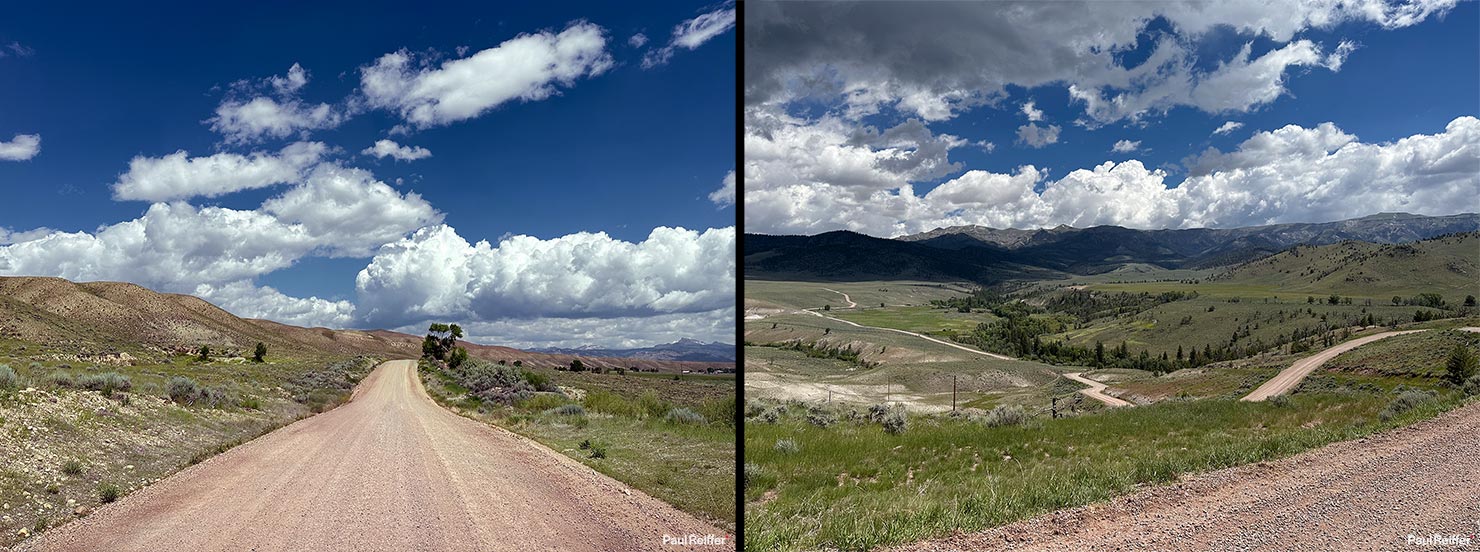
But what you find at the end of this “road” is nothing short of spectacular:
Nestled in the depths of a remote sage-brush valley that’s filled with the sounds of nature, between the Wind River and Absaroka mountain ranges, it’s easy to forget we’re only 2.5 hours away from the tourist-swarms of Jackson Hole and Yellowstone National Park.
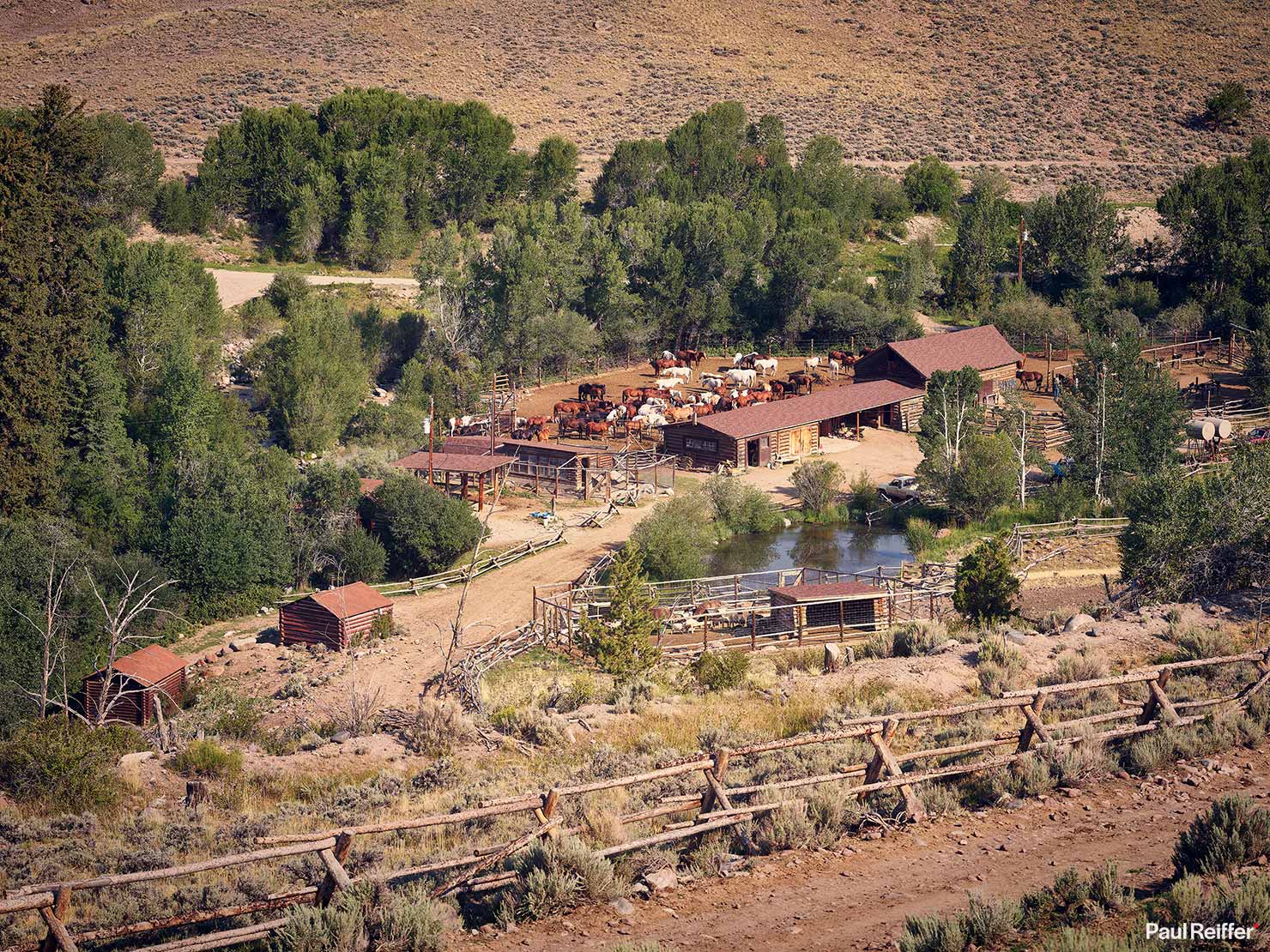
Photographically, this is pure and simple: Authentic, rustic, ranch-country.
Flanked by those epic peaks, the Bitterroot Ranch‘s main lodge on the river, along with its corrals, barns and high-country areas for the horses to relax, sit as perfect subjects for a traditional western working location.
For those wanting to brave the hike to the top (it’s brutal at midday!), it’s one heck of a view from up there – and gives some perspective of the sheer, vast, open spaces the team talk about so fondly for both horseback exploration and cattle-farming out here in the hills.

And it’s the Fox family who are the custodians of this amazing part of the country.
With three generations living and working on the ranch, this really is as “family” as you can get.
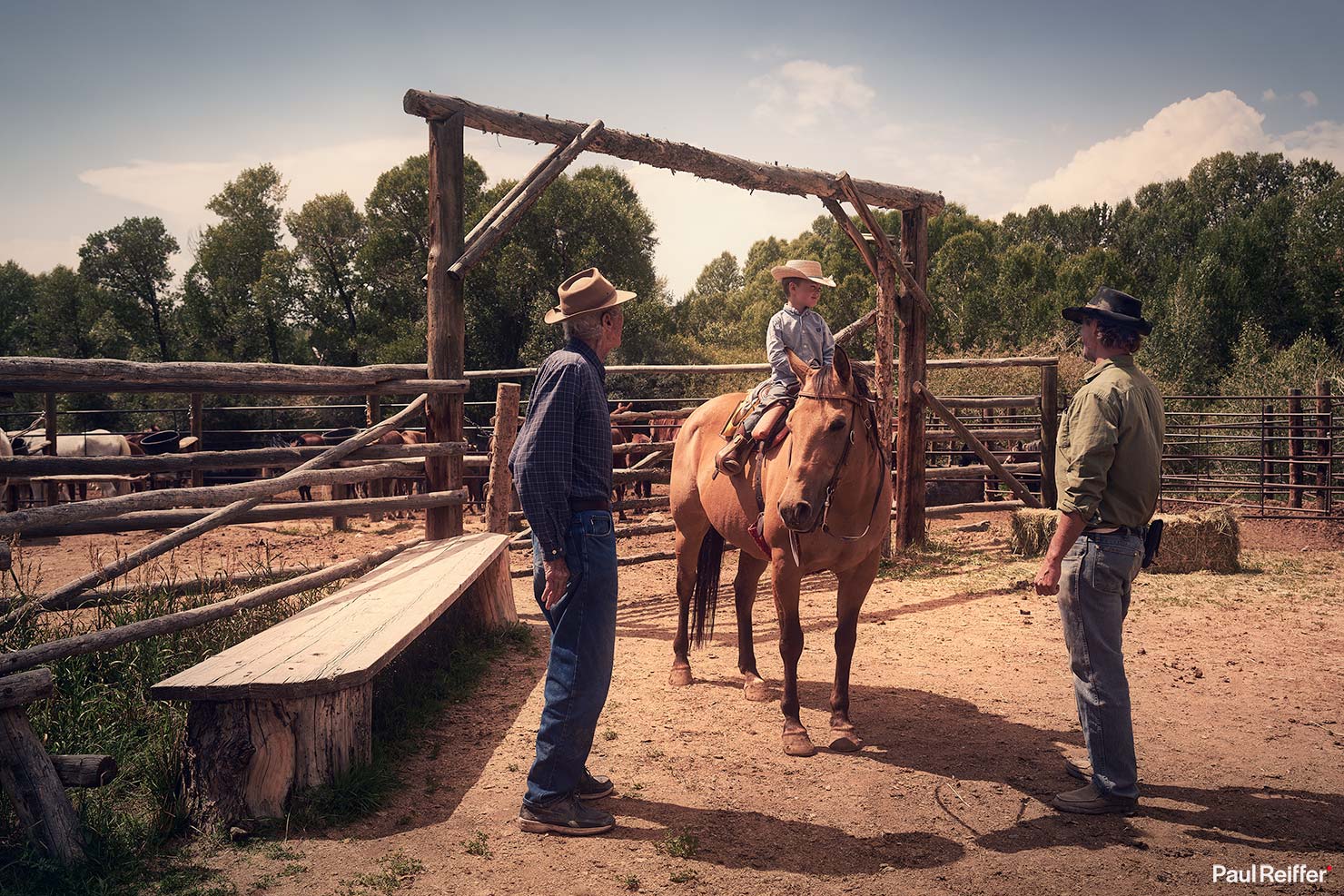
The moment you step foot on the dusty ground, you’re likely to spend time with several of the Fox ancestry – from the charismatic Bayard Fox (who founded the ranch back in 1971), to his son Richard, grandson Tristan, his wife Mel and daughter-in-law, Hadley.
All of whom are truly wonderful people to get to know, share stories, and learn about the Bitterroot (and ranching in general) – and it was Hadley I’d had the pleasure of talking with about capturing the ranch for a few months prior. Her welcome to the ranch, both before I arrived and during my time with them, was both generous and warm.
You see, when you live in a coastal town and have spent large portions of your life travelling and moving between major cities and other countries which are all desperate to outdo each other in a race to the future, the idea of slowing down and appreciating the “now” in the middle of nowhere can be quite appealing.

From horseshoes to dusty saddles, to something as simple as tied up lengths of rope; shooting “for me”, rather than for a client or print collection, provided that extra little bit of headspace I needed to reset and rewind a little after a crazy few years.
And when I say saddles – some of the older ones on display were nothing short of spectacular to photograph in the right light. With such a complete mix of textures, surfaces, reflections and shadows, these works of art and incredible craftsmanship just begged to be displayed in a frame. (If not ridden.)
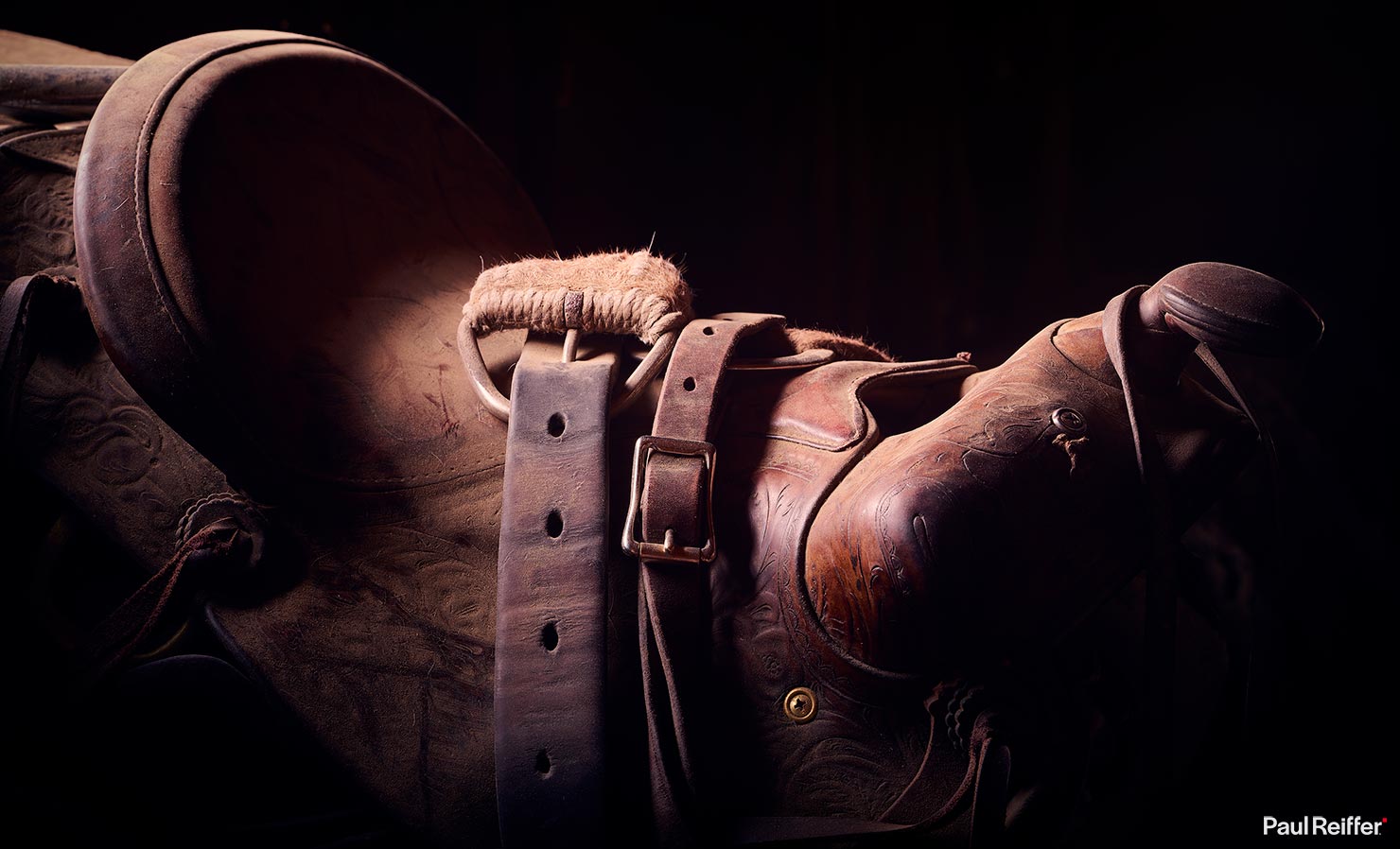
When you’re capturing such intricate objects on a camera that’s all about detail, you just can’t help but zoom in on these things to see the years of use worn in to the very fabric of an item.
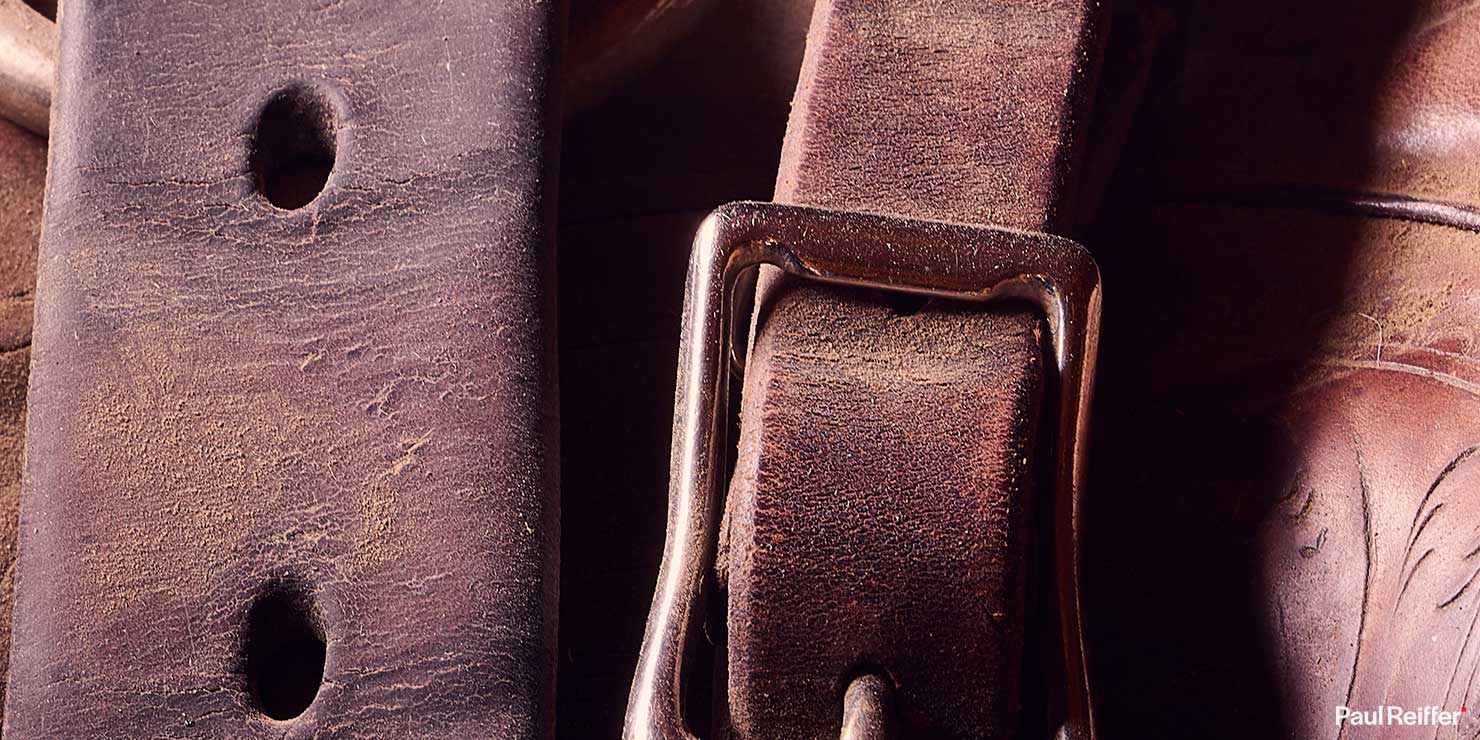
If only I could use one myself!
Of course, of all the people I know who can make use of a saddle, Bayard’s 90 years of riding would put him quite high up on that list. Zooming around the ranch on his four-wheeler, this ex-CIA agent has spent over 40,000 hours on horseback and still knows each of their 200 horses individually to this day.
Having enjoyed an incredible career and life prior to owning the ranch, everyone’s favourite plane-crash-surviving horseman shows no signs of letting up as he continues to enjoy life out here in the mountains well into his mid-nineties.
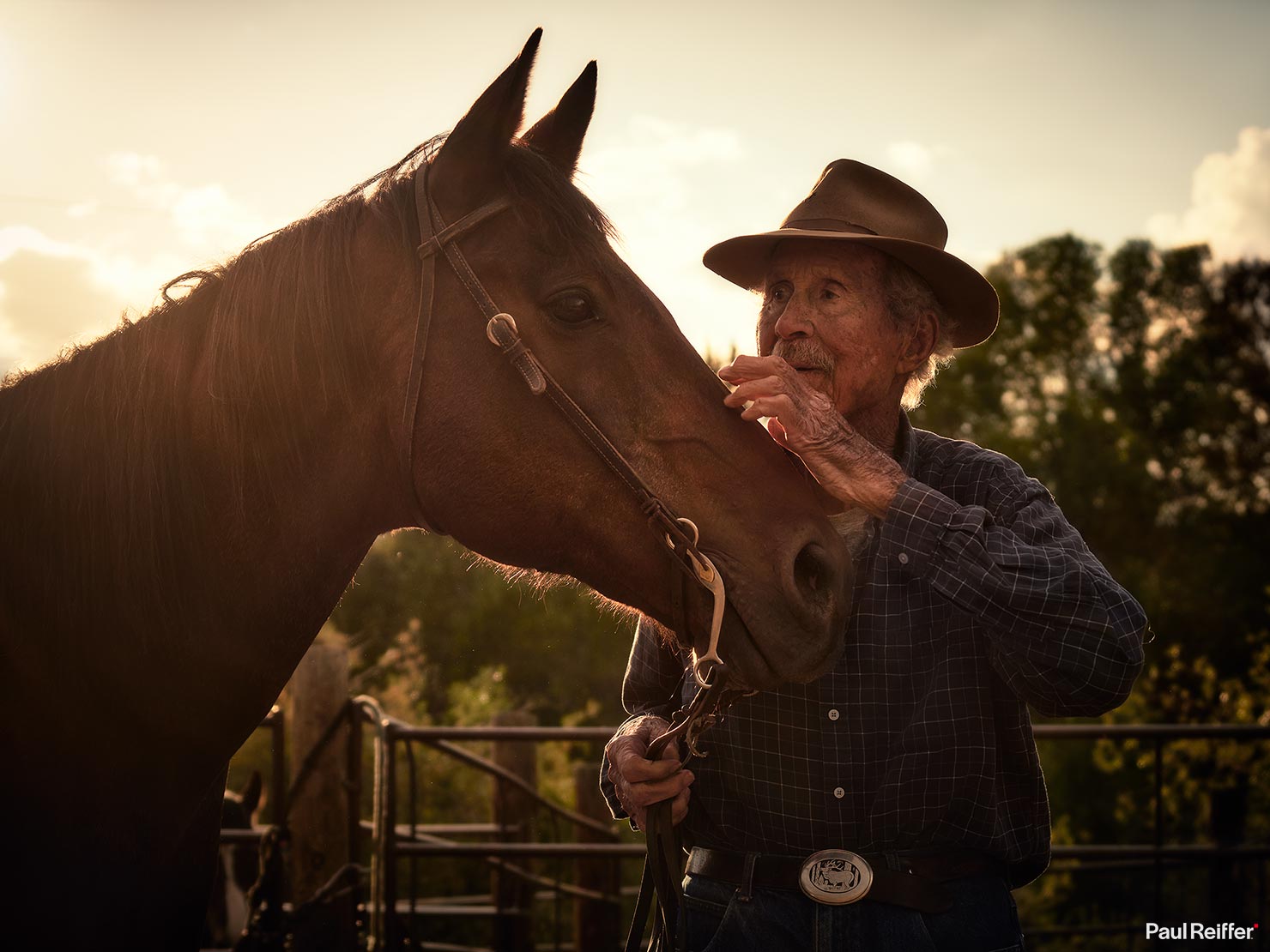
Mel, having grown up on a farm near Mount Kilimanjaro, provides a distinctive east-african accent that lets you know she’s on the ranch the second you hear even just a few words – and it’s that link to her heritage as Bayard’s wife that’s kept the family operating tours all around the world (including back in Africa) at times when the dude-ranch is less busy.
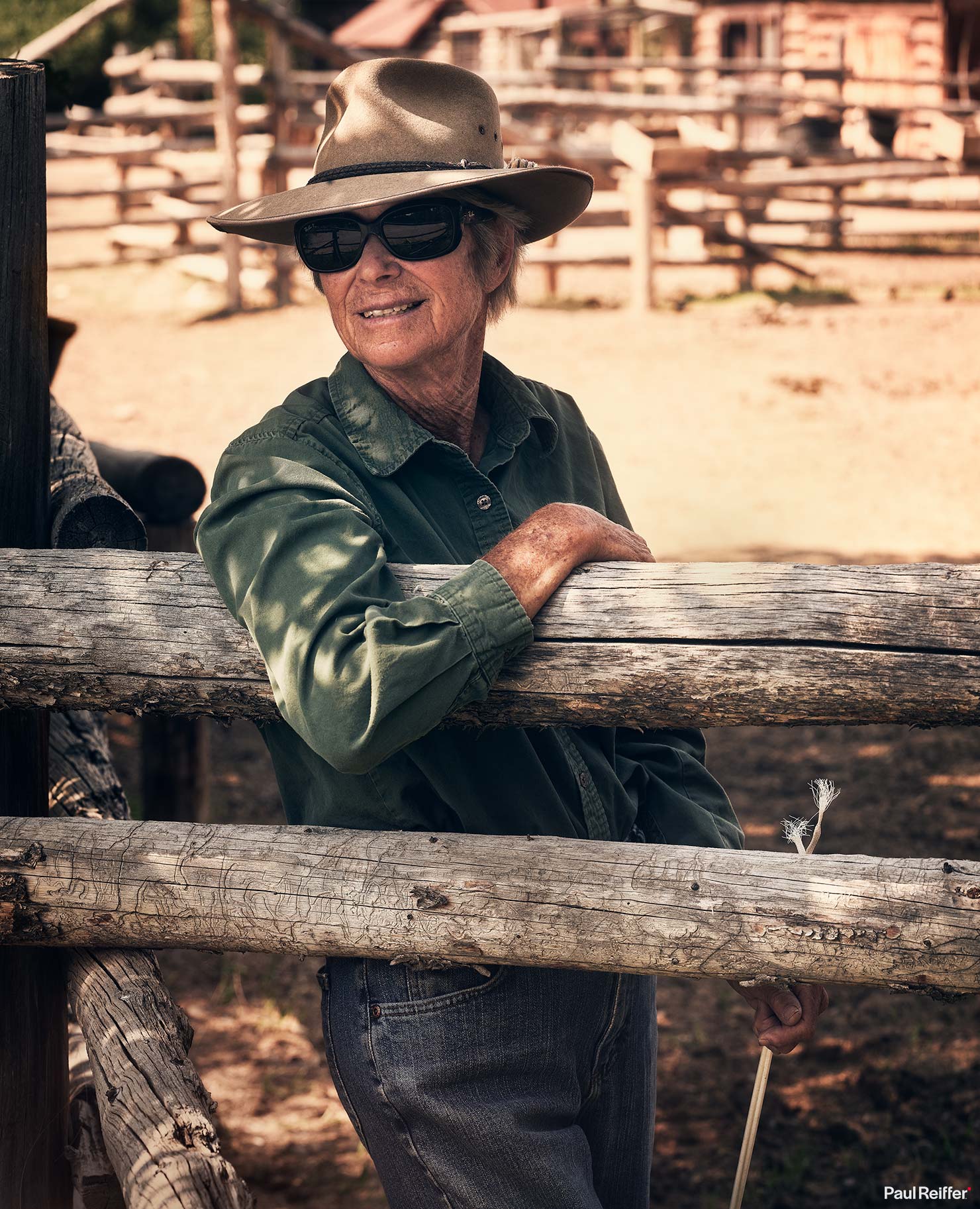
Watching Mel train the horses one afternoon, I must say there’s a distinct gap in my understanding of how, and why, a horse begins to trust their rider – but it’s one I’m desperate to learn more about. A mix of assertive, but gentle, instructions and signals slowly seemed to build that rapport with the animals she’s training on-site.
It’s clear this isn’t just following a recipe book of how to train horses – it’s a deep-rooted understanding, built on decades of experience, that means she’s able to connect with them (and the wranglers) in a way that’s truly fascinating to watch.
(Incidentally, the horses here are given the opportunity to “retire” on-site, and enjoy their later years once they’ve had enough of riding – something I wasn’t expecting to hear, but it does explain why they have so many now!)
Hadley and Richard, below, continued the family’s African connection with the ranch when they met while Richard was guiding a safari group in Kenya.
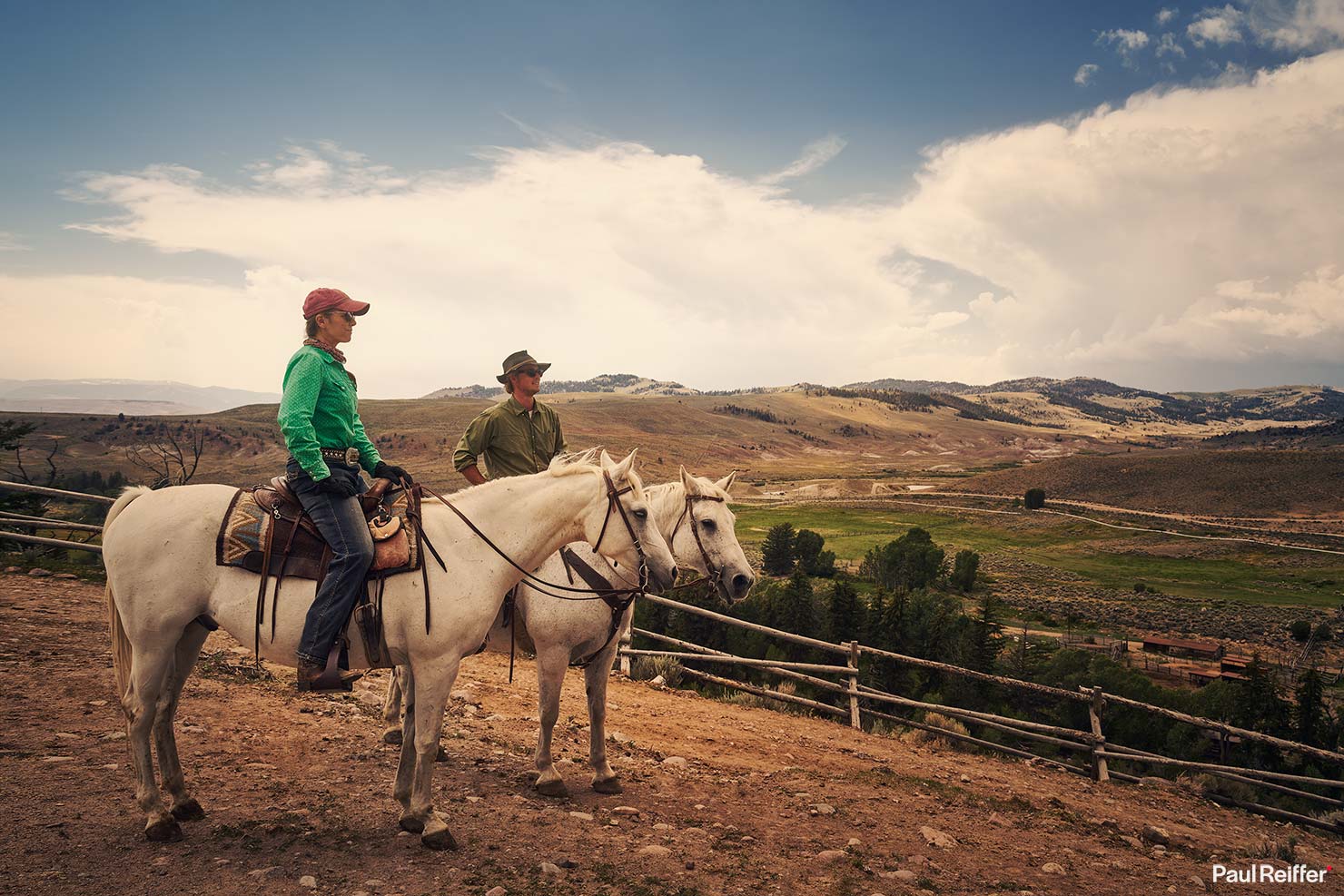
With Richard now splitting time between the dude-ranch operation and the pretty exhausting farming work that’s also being done at Bitterroot, I’m always amazed at the bright beaming smile that’s on his face whenever he walks into the main lodge to say hi to people.
Together with Hadley, they’re taking on the next stage of the ranch’s evolution.
Hadley’s ability to build partnerships with experts in complementary fields means the Bitterroot is now host to not only horseriding trips, but yoga retreats, equine psychology workshops and even photography events from time to time too. A Yale Graduate, from North Carolina, you’d be forgiven for thinking Hadley was born right here on the ranch with the connection she so clearly has with it.
She’s a hugger, mind – and as a Brit, well…
Speaking of generations – on my latest visit out to the ranch it was incredible to see how much Tristan, Hadley & Richard’s son, has grown – and how comfortable he is around all the guests, workers and (of course) horses at such a young age.
He’s got his own now – and looks more comfortable riding a horse than I still do riding a bike after 40 years of practice…

So back out, exploring the look of the ranch – this place really does have an abundance of textures and shapes – so many, in fact, it can be quite the challenge to work out what to focus on.
These two doors, for example – while the mid shots capture the rustic nature of their construction, it’s the tiny details that really give them a sense of place, purpose and re-use.
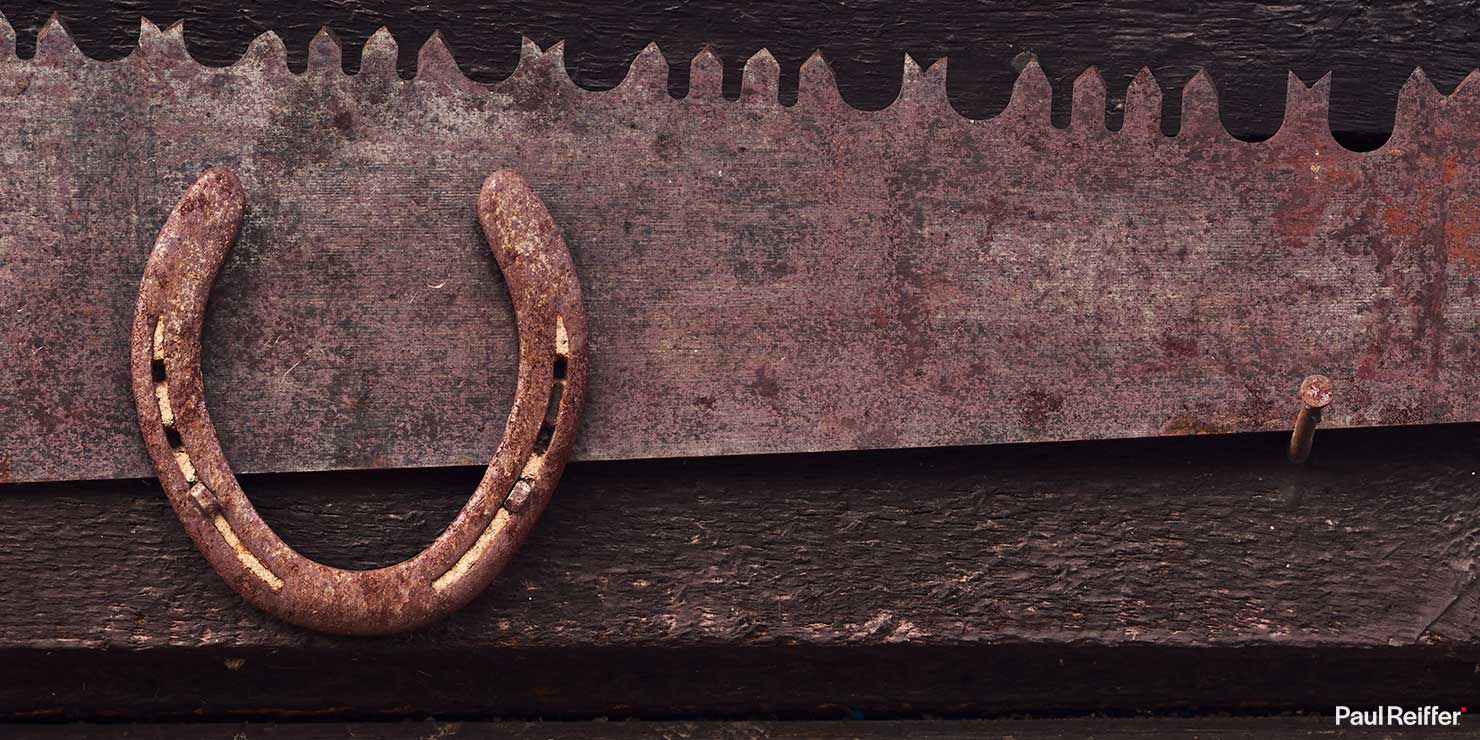
These aren’t buildings that have been bought in, or pre-made – these have been constructed by hand, with all the perfect imperfections that process brings to each and every part of them.
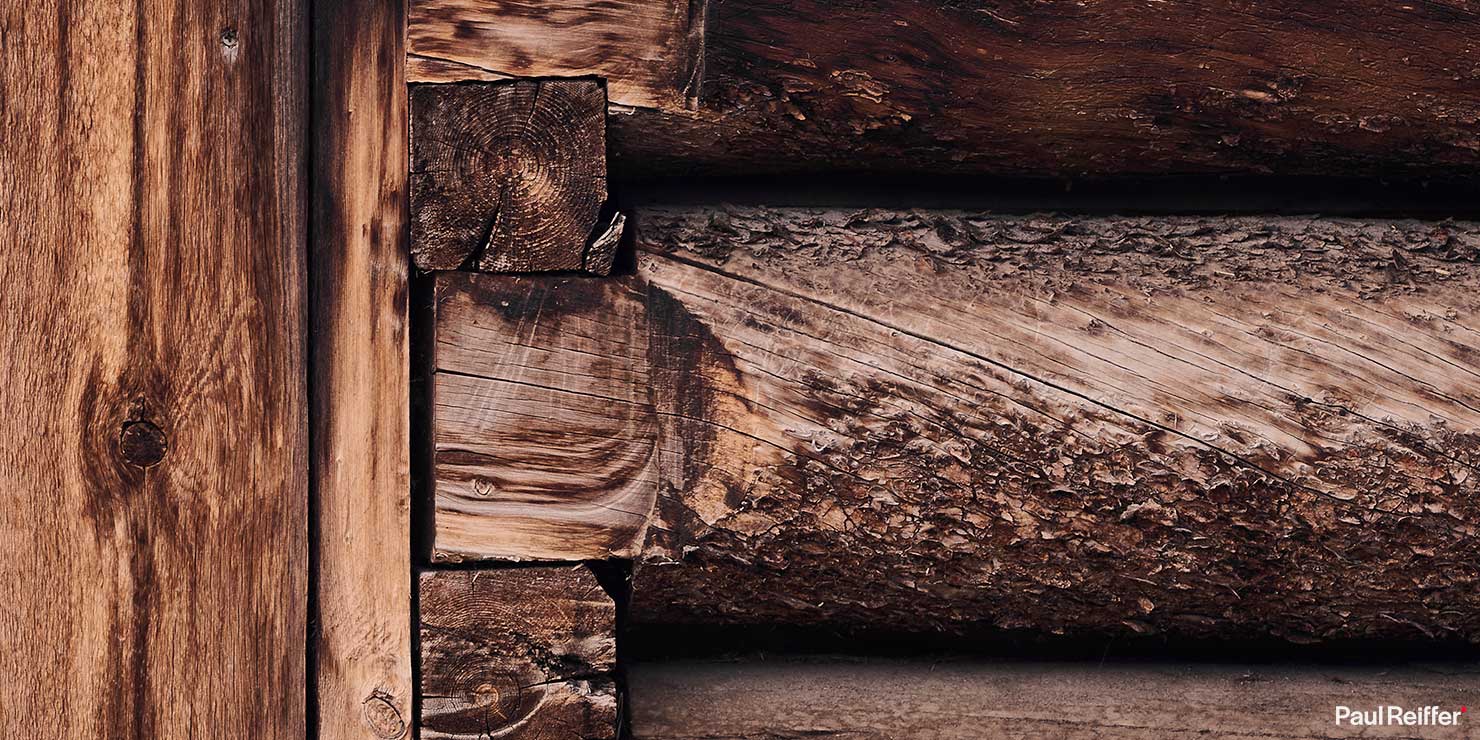
If you get the chance to enjoy “rush hour” at the ranch, do it.
At the end of each day, the horses are sent back up to the hilltop corral, and they really do know where they’re going. With food waiting at the top, it’s quite the scene to see them hurry up that slope to rest for the evening.
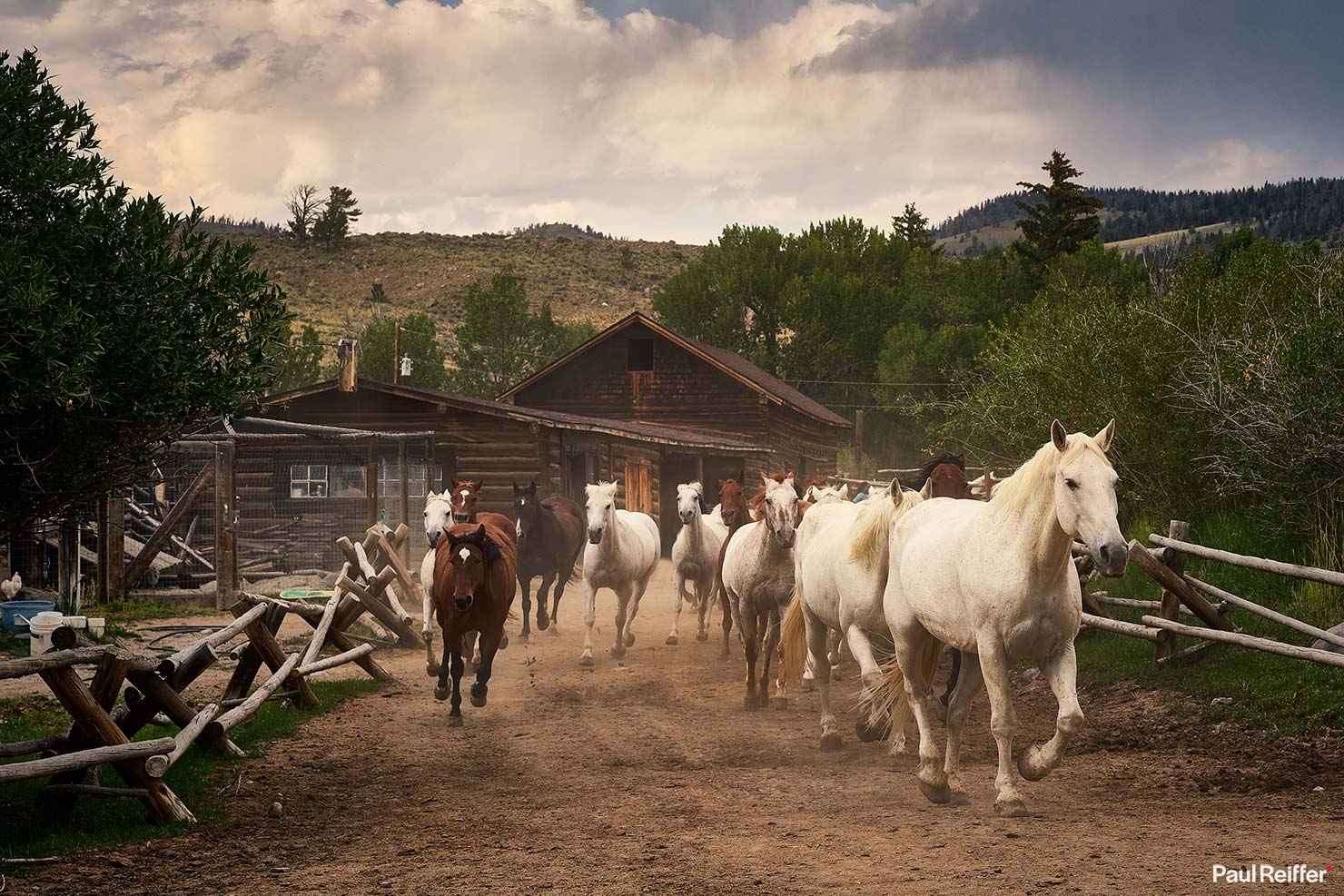
Speaking of hilltops – while almost inaccessible by (normal) car or truck, there’s another element to the Bitterroot Ranch that brings guests from far and wide, which we managed to see thanks to a friendly lift from one of the ranch hands, Scott.
Way up into the Shoshone National Forest, to the north of the main ranch itself, you’ll find “Cow Camp” – the ultimate pack-trip location, where guests can quite literally escape all their modern distractions (nothing works here!) and spend time out with the horses and cattle in the clearest fresh air around.
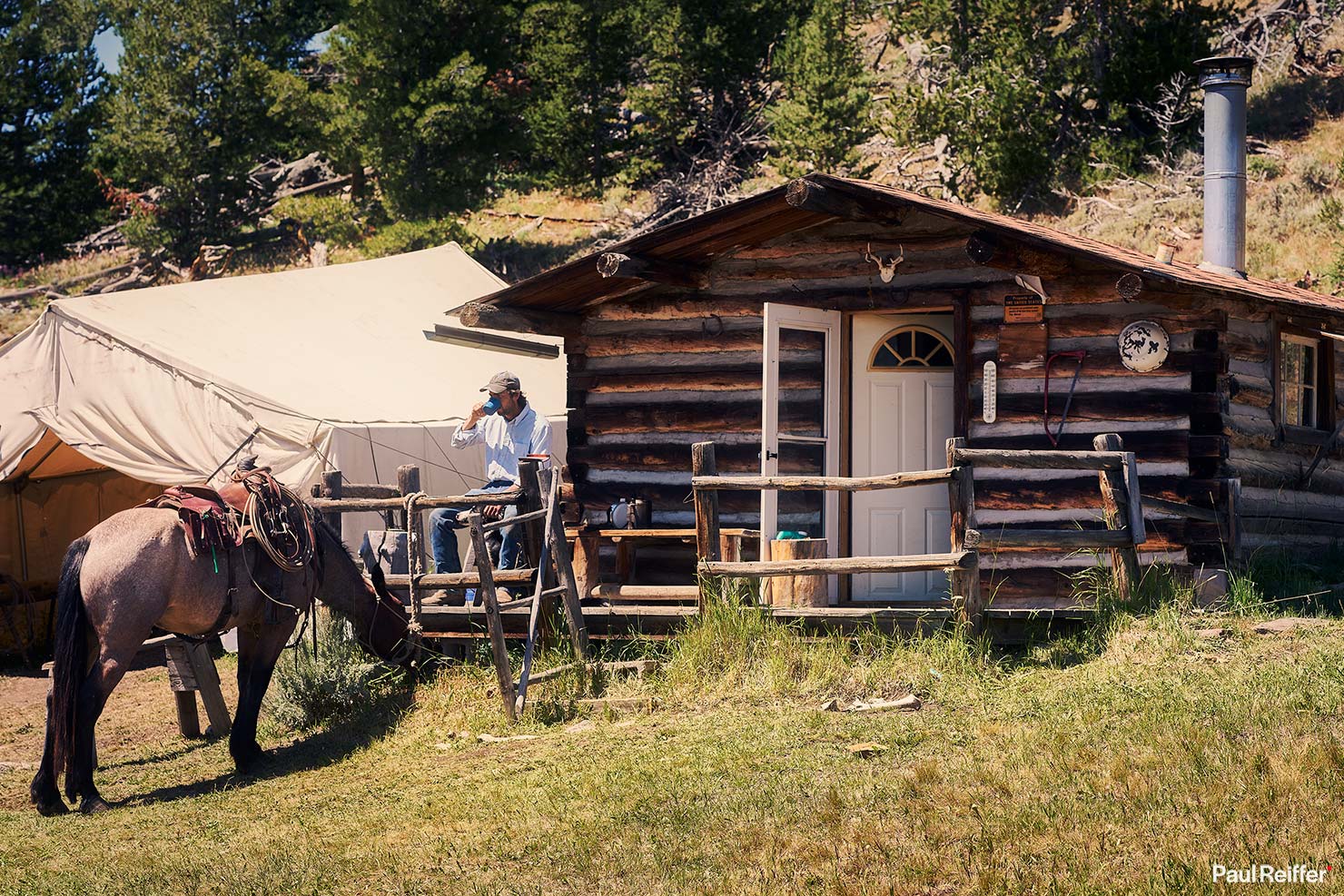
As a reminder (to me too), it’s called Cow Camp for a reason – and while a car may struggle to get around up there, through all the creeks and mud-ruts, the cattle seem to have a much easier time of it, especially when they manage to break through a fence or two.
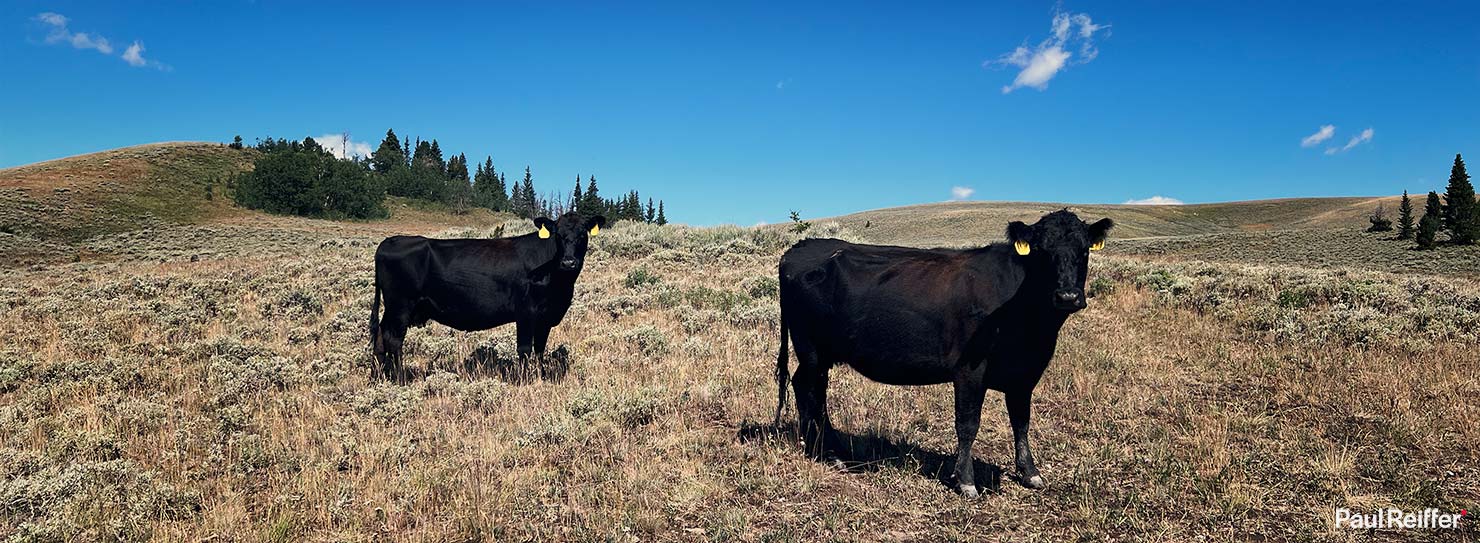
And seeing them was a great, timely, reminder – that this isn’t just here for our entertainment or vacation time. The ranch is a working ranch, with animals to manage, cattle to control, acres of land and fencing to constantly worry about – and for all of that, you’re going to need…
A cowboy.
Ross, in this case – who also manages the Cow Camp area for the ranch.
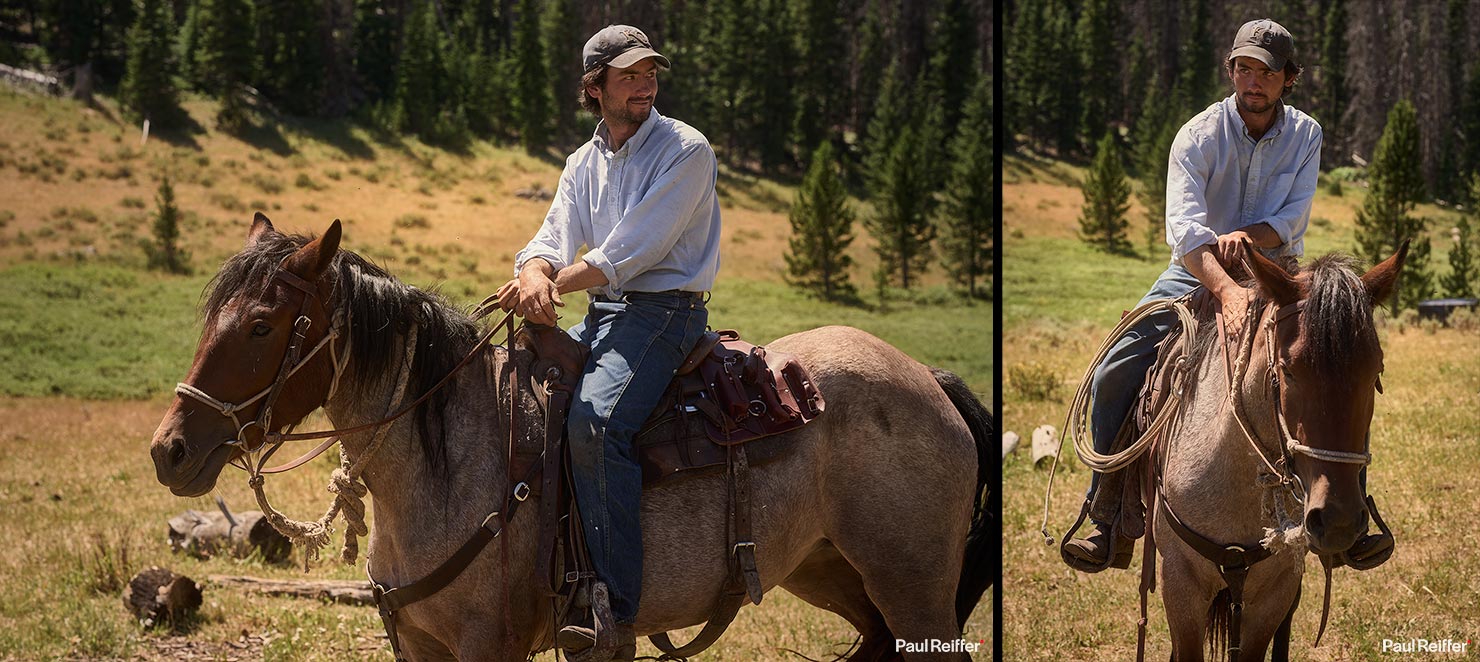
On the face of it, the scene up here is pretty similar to the main ranch: Saddles, horses, ropes and a corral – but you can see, feel, hear, that life is tough when you’re operating in these remote areas.

Moving horses around takes immense skill, patience, trust and experience – all of which, Ross has buckets of.

Where life down at the main ranch is formed around familiarity and processes that everyone knows well, up here, when anything (and everthing) does eventually happen, it’s a lot harder to fix, so being able to adapt is clearly the key to happiness.

The second Ross started demonstrating how to introduce a rope, I was taken straight back to that “personality thing” I saw when Mel was working with the horses down at the main corral. Again, as something I don’t have the experience to understand, it’s mesmorising to watch an animal and a human slowly begin to understand each other without any verbal means of communication.
I guess, when I rely so heavily on speaking in everything I do (even to get shots and compositions right) – it’s eye-opening to see how much can be done without that tool when two different species manage to work together.
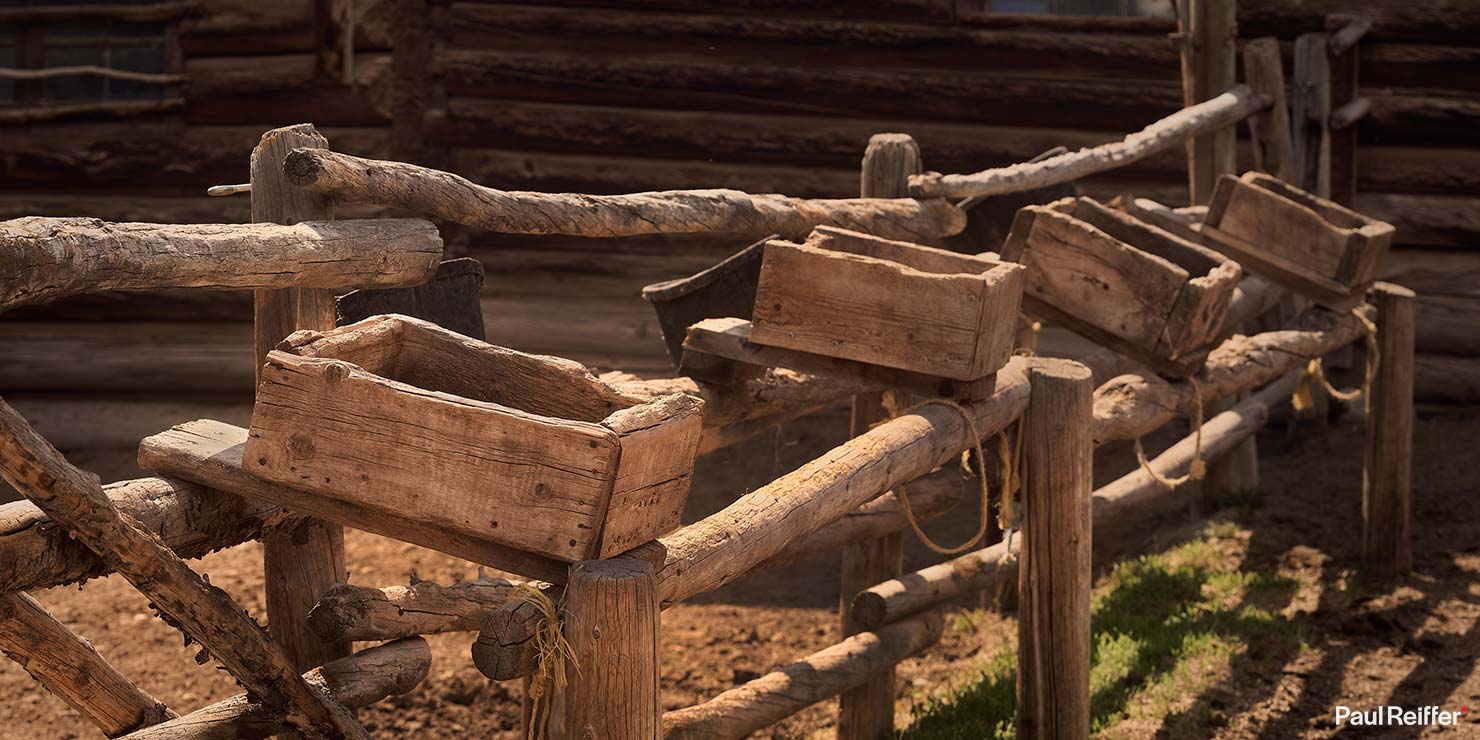
Granted, lunchtime looks a little different for Ross than it does for the horses, but I’m pretty sure both eat well after a tough day’s work out there in the hills and creeks of the forest.
As if I needed any form of confirmation that horses have just as much personality and capability for mischief as the most playful human – I’ll offer up this tale (well, tail?) from when I was photographing:
At first, I took this horse’s staring as intrigue (what’s that guy with three poles and a black box doing over there?) – but after a while, almost like they knew what I was doing, every time I went to take a photo the ropes would be mouth-grabbed and pulled off their hook.
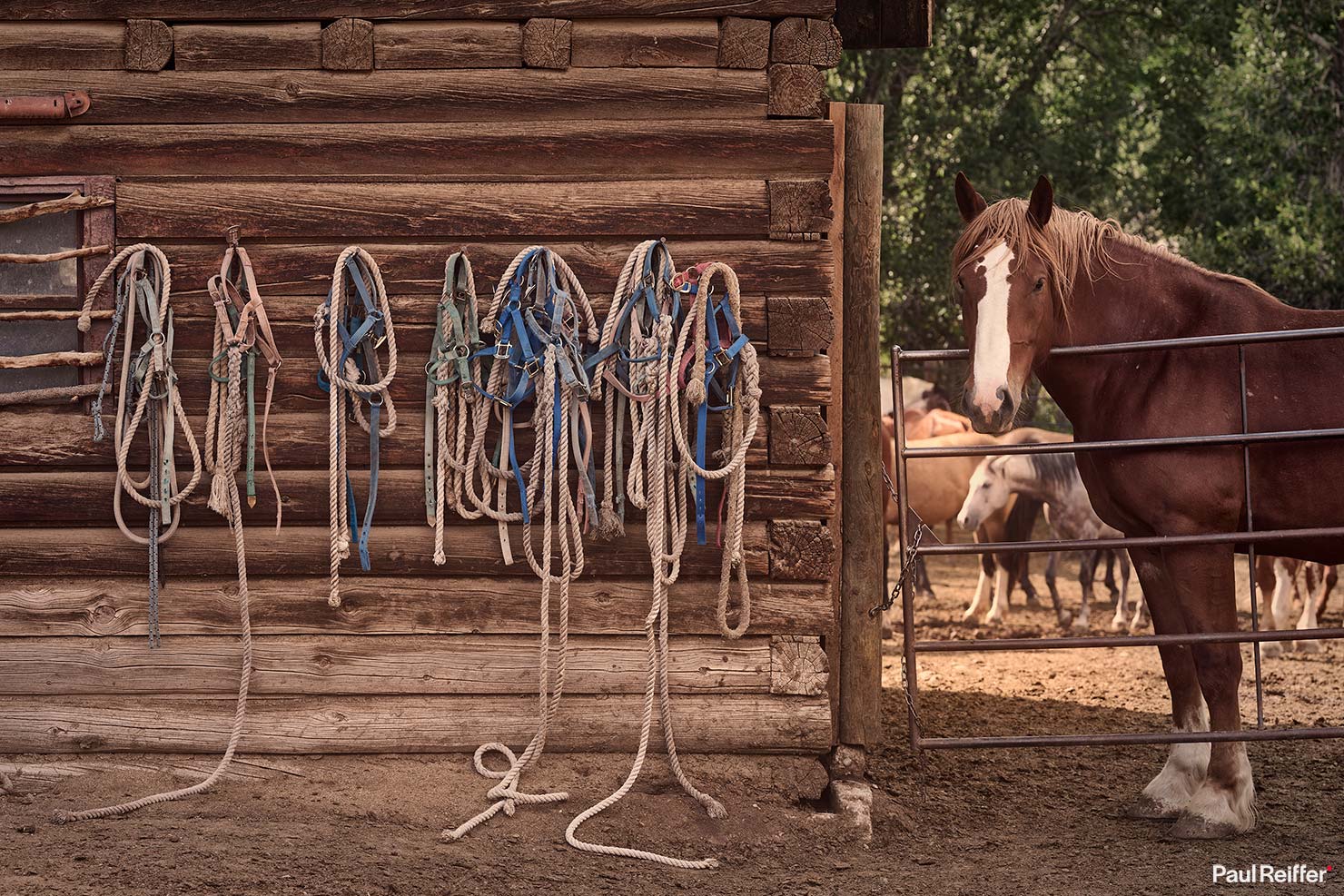
One of the wranglers would come and tidy it up, until the second I went to click a button and the same would happen. If I didn’t go near the camera, the ropes were left alone – the second I prepared, off they were pulled again.
Now tell me a horse doesn’t know it’s photo-time…!
So, what of that header shot – of Bayard Fox?
Well, I really wanted to capture the connection between this incredible man and the horses he’s built his life around out here. With clouds in every direction that afternoon, I wasn’t too hopeful of the natural light I wanted, but as sunset approached things started to get slightly better.
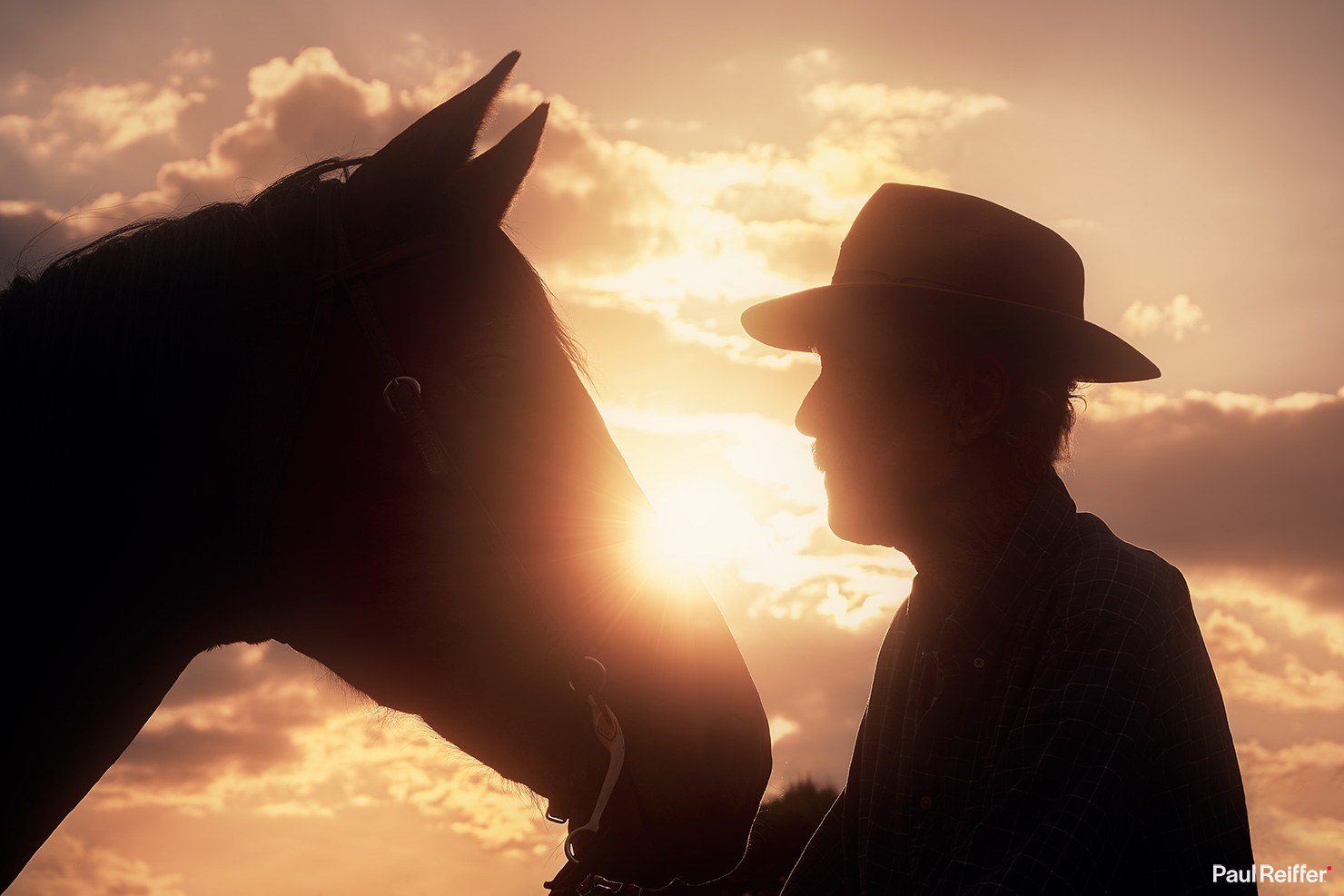
I must admit, I didn’t realise how much energy and concentration it can take to encourage a horse to stay calm when up-close, but Bayard did it with expert skill – and for that one brief period as the sunlight popped through the cloud, we got the shot.
Now there’s a man who’s lived a truly incredible life. Which, to be fair, he’s written about in his book for those who want to learn more (and will happily tell you about over dinner, for those lucky enough to visit).

My thoughts, on leaving the Bitterroot Ranch?
I want to be there.
It’s a place that somehow just brings calm, simply by spending time on the ground. I know it can be far from calming when certain things are happening (or when a monster winter sets in!) but as a contrast to the life I lead, this place really does have something special.
And that’s a feeling I’ve only ever known here in the mountains – at the end of a 16 mile dirt road track, out in the middle of nowhere.
There’s always a PS…
1. I checked with Richard and he agreed that I should have a bow… Next stop, the archery store!
2. My cowboy boots have finally stopped hurting (and now I love them).
3. While I’m missing the horse, and the cows, and all the skills – my collection of cowboy hats (which range from hand-formed beaver ones to cool straw options for the summer), mean at least my silhouette can keep me mentally tied to the Bitterroot Ranch while I’m out shooting a different kind of target from now on…


